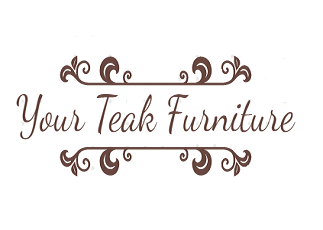Hesco barriers are an incredible invention that many people might not know about, but they’ve been saving lives and protecting property for decades. In this article, we’ll dive into the world of Hesco barriers, focusing on their use in China, including specific companies like Dongfu and Hesco barrier factories. So, what exactly are these barriers, and why are they so important?
What are Hesco Barriers?
Hesco barriers are large, collapsible wire mesh containers lined with heavy-duty fabric. Think of them as giant, industrial-strength baskets filled with sand, earth, or gravel. They’re primarily used for military fortifications, flood control, and even in some civilian construction projects. These barriers can be quickly assembled and filled, providing a sturdy and reliable barrier against various threats.
The History of Hesco Barriers
Hesco barriers were first introduced in the late 1980s by a British company, Hesco Bastion Ltd. Originally designed for erosion control and flood defense, they quickly gained popularity for their effectiveness and ease of use. Over the years, their use expanded to military applications, where they became a staple for protecting soldiers and equipment in conflict zones.
How Do Hesco Barriers Work?
The principle behind Hesco barriers is simple yet ingenious. When the wire mesh containers are filled with material like sand or gravel, they create a solid wall that can absorb and deflect impacts. Whether it’s stopping floodwaters or providing cover from explosions, these barriers are designed to stand up to intense forces.
Applications of Hesco Barriers
Hesco barriers are incredibly versatile. Here are some common uses:
- Military Defense: Providing protection in combat zones.
- Flood Control: Acting as levees or floodwalls to protect communities.
- Perimeter Security: Safeguarding critical infrastructure like power plants and embassies.
- Erosion Control: Preventing soil erosion in coastal and riverbank areas.
Why China Relies on Hesco Barriers
China has embraced Hesco barriers for several reasons. With a vast and varied landscape, the country faces numerous natural and man-made threats. Hesco barriers offer a quick and effective solution for flood control, military defense, and infrastructure protection. Their ease of deployment and reliability make them an invaluable resource.
The Role of Dongfu in Hesco Barrier Production
Dongfu is a leading manufacturer of Hesco barriers in China. The company specializes in producing high-quality barriers that meet international standards. Dongfu’s commitment to innovation and quality has made it a trusted name in the industry, supplying barriers for both domestic use and international export.
Inside a Hesco Barrier Factory
A visit to a Hesco barrier factory, such as those operated by Dongfu, reveals a fascinating process. From welding the wire mesh to lining the containers with geotextile fabric, each step is meticulously planned and executed. These factories are equipped with advanced machinery and employ skilled workers to ensure each barrier meets stringent quality standards.
Advantages of Hesco Barriers
Why are Hesco barriers so popular? Here are some key advantages:
- Speed of Deployment: They can be quickly assembled and filled.
- Durability: Made from robust materials, they withstand harsh conditions.
- Flexibility: Suitable for various applications, from military to civilian use.
- Cost-Effectiveness: Economical compared to traditional construction methods.
Hesco Barriers vs. Traditional Sandbags
When it comes to flood control and military defense, Hesco barriers offer several advantages over traditional sandbags:
- Efficiency: One Hesco barrier can replace hundreds of sandbags.
- Strength: Hesco barriers are more durable and provide better protection.
- Labor: Less manpower is required to deploy Hesco barriers compared to sandbags.
Environmental Impact of Hesco Barriers
While Hesco barriers are effective, it’s important to consider their environmental impact. The materials used, such as galvanized steel and geotextile fabric, are designed to be durable and resistant to degradation. However, proper disposal and recycling at the end of their use are essential to minimize environmental harm.
How to Install Hesco Barriers
Installing Hesco barriers is a straightforward process:
- Unfold the Barrier: Lay it flat on the ground.
- Join Units Together: Connect multiple units as needed.
- Fill the Barrier: Use machinery to fill the container with sand, earth, or gravel.
- Compact the Fill: Ensure the fill material is compacted for stability.
Innovations in Hesco Barrier Design
The design of Hesco barriers continues to evolve. Recent innovations include:
- Lighter Materials: New materials reduce the weight of barriers for easier transport.
- Enhanced Fabric: Improved fabrics increase durability and resistance to elements.
- Modular Designs: New designs allow for more flexible configurations.
The Future of Hesco Barriers
As the demand for rapid deployment defenses and flood controls grows, the future of Hesco barriers looks promising. Ongoing research and development will likely bring even more innovations, making these barriers even more versatile and effective.
Conclusion
Hesco barriers have proven to be a crucial tool in both military and civilian applications. From protecting soldiers in conflict zones to preventing flood damage in vulnerable communities, these barriers offer a reliable and efficient solution. As China continues to develop its infrastructure and enhance its defense capabilities, companies like Dongfu play a vital role in supplying high-quality Hesco barriers.
FAQs
- What are Hesco barriers used for?
Hesco barriers are used for military defense, flood control, perimeter security, and erosion control. - How are Hesco barriers constructed?
Hesco barriers are constructed from wire mesh containers lined with geotextile fabric and filled with sand, earth, or gravel. - Why are Hesco barriers preferred over traditional sandbags?
Hesco barriers are preferred because they are more durable, require less manpower to deploy, and provide better protection. - What role does Dongfu play in the production of Hesco barriers?
Dongfu is a leading manufacturer of Hesco barriers in China, known for producing high-quality barriers that meet international standards. - Are Hesco barriers environmentally friendly?
Hesco barriers are designed to be durable and long-lasting, but proper disposal and recycling are necessary to minimize their environmental impact.

